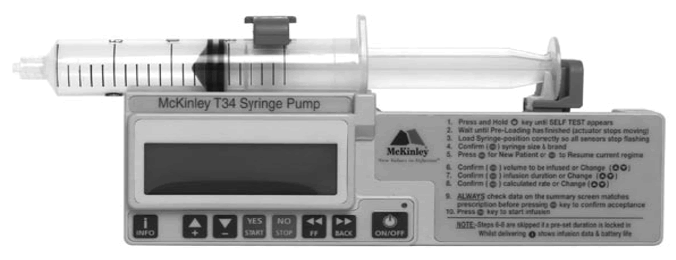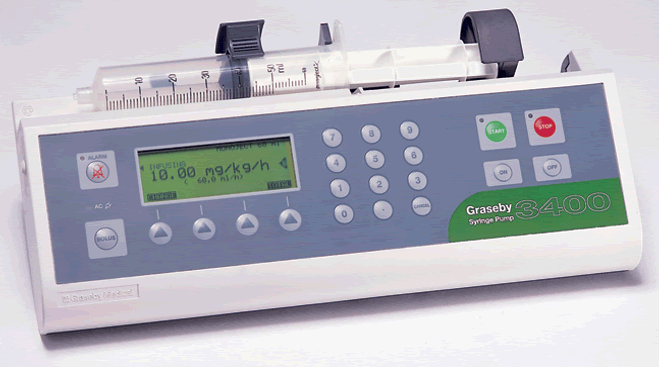|
Diluent: water for injection
|
||||
| Type of pump |  |
 |
||
| Drug Combinations | Dilute using water for injection to a final volume of: | |||
| 17ml in 20ml syringe and use BD Bodyguard T pump |
22 ml in 30ml syringe and use BD Bodyguard T pump |
24ml in 50ml syringe and use non ambulatory pump |
48ml in 50ml syringe and use non ambulatory pump |
|
| MAXIMUM amounts that can be mixed together and are considered physically stable for 24h | ||||
| Morphine Sulfate Cyclizine* |
270mg 150mg |
350mg 150mg |
380mg 150mg |
760mg 150mg |
| Morphine Sulfate Haloperidol |
225mg 6mg |
290mg 8mg |
315mg 8mg |
730mg 10mg |
| Morphine Sulfate Hyoscine butylbromide |
170mg 90mg |
220mg 120mg |
240mg 120mg |
480mg 120mg |
| Morphine Sulfate Hyoscine hydrobromide |
370mg 1200 micrograms |
480mg 1200 micrograms |
520mg 1200 micrograms |
1000mg 1200 micrograms |
| Morphine Sulfate Levomepromazine |
230mg 50mg |
300mg 65mg |
320mg 70mg |
640mg 100mg |
| Morphine Sulfate Metoclopramide |
120mg 50mg |
160mg 70mg |
175mg 75mg |
350mg 120mg |
| Morphine Sulfate Midazolam |
85mg 40mg |
110mg 55mg |
120mg 60mg |
240mg 80mg |
| Morphine Sulfate Octreotide |
115mg 460 micrograms |
150mg 600 micrograms |
160mg 650 micrograms |
320mg 1200 micrograms |
*Use water for injection as diluent for cyclizine